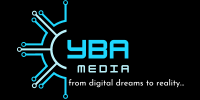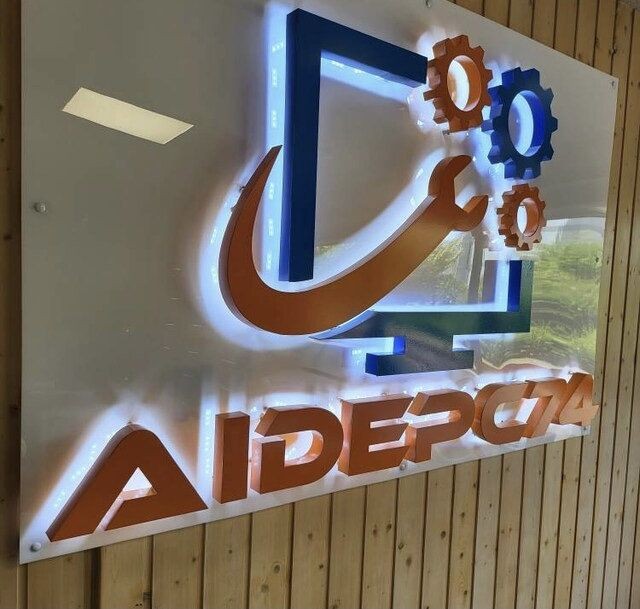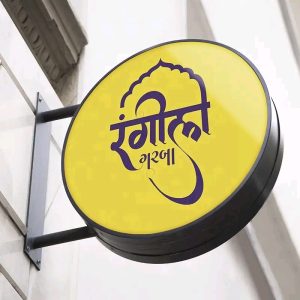- +256 781233665
- [email protected]
- Shop A-24, University Plaza
3D sign board Kampala
4.00 out of 5 based on 1 customer rating
Product Highlights
Investing in a 3D sign board in Kampala is a powerful way to elevate your brand’s visibility and attract customers. Whether you’re looking to design a logo, create impactful 3D signage, or even produce signs in-house with a 3D printer, there are numerous options available to suit your needs and budget. By understanding the costs, tools, and processes involved, you can make informed decisions that will enhance your brand’s presence and drive success.
Description
3D Sign Board Kampala: Elevate Your Brand Visibility with Stunning 3D Signage
In today’s competitive business environment, having an eye-catching and professional signboard is essential for standing out and attracting customers. 3D sign boards in Kampala are an excellent way to achieve this. They offer a dynamic, visually appealing solution that enhances brand visibility and leaves a lasting impression. This comprehensive guide will explore everything you need to know about 3D signboards in Kampala, including pricing, design considerations, logo creation, and more.
3D Sign Board Kampala Prices: Understanding the Costs
When it comes to 3D signboards, pricing can vary significantly depending on several factors such as size, materials, complexity of the design, and the level of detail required. Here’s a breakdown of what you can expect:
- Small 3D Sign Boards: Ideal for indoor spaces, office branding, or smaller storefronts, prices for small 3D signboards in Kampala typically range from UGX 500,000 to UGX 1,000,000. These signs are usually made from durable materials like PVC or acrylic and can be customized to match your brand’s aesthetic.
- Medium 3D Sign Boards: For medium-sized signs suitable for reception areas or larger storefronts, expect to pay between UGX 1,000,000 to UGX 3,000,000. These signs often incorporate more detailed designs and may use premium materials such as wood or metal to achieve a more luxurious look.
- Large 3D Sign Boards: Large outdoor signs designed for maximum visibility can cost anywhere from UGX 3,000,000 to UGX 10,000,000 or more. These signs are made from weather-resistant materials, ensuring they can withstand the elements while maintaining their visual appeal.
By comparing quotes from different providers and considering your specific needs, you can find a 3D signboard solution that fits your budget while delivering high-quality results.
How Much Does It Cost to Design a Logo in Uganda?
Designing a professional logo is a crucial step in establishing a strong brand identity. The cost of designing a logo in Uganda varies depending on the designer’s experience, the complexity of the design, and the number of revisions included in the package. Here’s what you can expect:
- Basic Logo Design: For a simple logo design, prices typically start at UGX 200,000. This option is ideal for startups or small businesses looking for a quick and cost-effective solution.
- Intermediate Logo Design: More detailed logos, which may include multiple design concepts and revisions, generally cost between UGX 500,000 and UGX 1,500,000. This level of service is suitable for businesses that require a more refined and polished logo.
- Advanced Logo Design: For businesses seeking a highly customized and intricate logo, prices can exceed UGX 2,000,000. These designs are often created by experienced professionals who offer a comprehensive branding package that includes logo creation, brand guidelines, and more.
Investing in a well-designed logo is essential for building brand recognition and ensuring your 3D signboard accurately reflects your business identity.
What is the Best 3D Logo Maker?
When it comes to creating a 3D logo, there are several tools and software options available that can help bring your vision to life. Here are some of the best 3D logo makers you can consider:
- Blender: A powerful and free 3D creation suite, Blender is ideal for businesses looking to create detailed and high-quality 3D logos. While it has a steep learning curve, its extensive features make it a top choice for professional designers.
- Adobe Dimension: Part of the Adobe Creative Cloud, Adobe Dimension is a user-friendly tool that allows you to create 3D logos quickly and easily. It’s perfect for businesses that already use Adobe products and are looking for seamless integration with other design tools.
- Tinkercad: A web-based application, Tinkercad is a great option for beginners who want to create simple 3D logos. Its intuitive interface makes it easy to design, and it’s a great starting point for those new to 3D design.
- Canva: While primarily known for 2D designs, Canva offers 3D logo creation features that are easy to use and perfect for businesses looking for a straightforward solution without the need for advanced design skills.
Each of these tools offers unique advantages, so choosing the best one depends on your specific needs, design experience, and the complexity of your logo.
How to Make My Logo 3D: A Step-by-Step Guide
Creating a 3D logo involves several steps, from concept development to the final design. Here’s a general process you can follow:
- Conceptualize Your Logo: Start by sketching out ideas for your logo on paper. Consider how the different elements will translate into a 3D design. Think about depth, perspective, and how lighting might affect the appearance of your logo.
- Choose the Right Software: Select a 3D logo maker that suits your needs and skill level. If you’re a beginner, opt for tools like Canva or Tinkercad. For more advanced designs, Blender or Adobe Dimension are excellent choices.
- Create the Base Design: Begin by designing the 2D version of your logo. This will serve as the foundation for the 3D version. Make sure the design is clean and clear, as this will make the 3D conversion process smoother.
- Add Depth and Dimension: Using your chosen software, extrude the 2D design to create depth. Adjust the thickness and angle of the different elements to create a realistic 3D effect.
- Apply Textures and Colors: Add textures and colors to your 3D logo to enhance its appearance. Consider how different materials (e.g., metal, plastic, wood) will look in your design and choose the ones that best reflect your brand.
- Refine and Render: Once you’re satisfied with the design, refine the details and render the final 3D logo. Make sure to test it in different lighting conditions to ensure it looks good in all environments.
- Save and Export: Save your 3D logo in high-resolution formats that can be used for both digital and physical signage.
How to Create a Brand Logo
Creating a brand logo involves more than just design; it’s about developing a visual identity that resonates with your target audience. Here’s a step-by-step guide to creating a brand logo:
- Understand Your Brand: Before you start designing, take the time to understand your brand’s values, mission, and target audience. This will help you create a logo that accurately represents your brand’s identity.
- Research Competitors: Look at the logos of your competitors to understand the industry standards and find ways to differentiate your brand.
- Define Your Logo’s Purpose: Decide on the key message or feeling you want your logo to convey. Whether it’s professionalism, creativity, or trustworthiness, this will guide your design choices.
- Sketch Ideas: Start by sketching out different logo concepts. Don’t worry about perfection at this stage—focus on exploring different ideas and styles.
- Choose the Right Font and Colors: Select a font and color scheme that aligns with your brand’s identity. Fonts should be legible and reflect your brand’s personality, while colors should evoke the desired emotions.
- Design the Logo: Use graphic design software to bring your ideas to life. Experiment with different layouts, shapes, and elements until you find a design that works.
- Get Feedback: Share your logo with colleagues, friends, or a focus group to get feedback. Make any necessary adjustments based on their input.
- Finalize and Protect Your Logo: Once you’ve finalized your design, consider trademarking your logo to protect your brand identity.
3D Signage Design: Creating Impactful Visuals
Designing 3D signage involves more than just adding depth to a flat design; it’s about creating visuals that engage and attract customers. Here are some key considerations for 3D signage design:
- Material Selection: Choose materials that complement your brand and the environment where the sign will be displayed. Common materials for 3D signs include PVC, acrylic, metal, and wood.
- Lighting: Incorporating lighting into your 3D sign can enhance its visibility and create a dramatic effect, especially at night. LED backlighting is a popular choice for its energy efficiency and vibrant illumination.
- Size and Scale: The size of your sign should be proportional to its placement. Ensure that it’s large enough to be seen from a distance but not so large that it overwhelms the space.
- Color and Finish: Choose colors that reflect your brand’s identity and consider using different finishes, such as matte or glossy, to add visual interest.
- Typography: The font used in your signage should be clear and easy to read from a distance. Avoid overly decorative fonts that may reduce legibility.
Road Sign Posts in Uganda: The Role of 3D Signage
3D signage isn’t just for businesses; it can also be used for road signposts in Uganda. 3D road signs offer several advantages, including increased visibility, durability, and the ability to convey information more effectively. Whether it’s directional signs, warning signs, or informational signs, 3D designs can make these essential tools more effective and easier to understand.
3D Printer Price in Uganda: Bringing 3D Signage In-House
For businesses looking to create their own 3D signage, investing in a 3D printer can be a cost-effective solution. Here’s what you need to know about 3D printer prices in Uganda:
- Entry-Level 3D Printers: Suitable for small-scale projects and simple designs, entry-level 3D printers range from UGX 2,000,000 to UGX 5,000,000. These printers are ideal for beginners and offer basic functionality.
- Mid-Range 3D Printers: For more complex designs and larger print volumes, mid-range 3D printers cost between UGX 5,000,000 to UGX 15,000,000. These printers provide better resolution, faster printing speeds, and more material options.
- High-End 3D Printers: Professional-grade 3D printers, capable of producing large and intricate signs, can cost upwards of UGX 20,000,000. These machines offer advanced features and are ideal for businesses with high demand for 3D signage.
Investing in a 3D printer allows for greater creative control and the ability to produce custom signage on demand.
Conclusion
Investing in a 3D sign board in Kampala is a powerful way to elevate your brand’s visibility and attract customers. Whether you’re looking to design a logo, create impactful 3D signage, or even produce signs in-house with a 3D printer, there are numerous options available to suit your needs and budget. By understanding the costs, tools, and processes involved, you can make informed decisions that will enhance your brand’s presence and drive success.
Tags: 3D acrylic signs Kampala, 3D LED signs Kampala, 3D letters signs Kampala, 3D logo signs Kampala, 3D metal signs Kampala, 3D sign board Kampala, 3D sign installation Kampala, 3D sign manufacturers Kampala, 3D sign printing Kampala, 3D signage makers in Kampala, 3D signs Kampala, Affordable 3D signs Kampala, Best 3D signs in Kampala, Custom 3D signs Kampala
1 review for 3D sign board Kampala
Add a review Cancel reply
- 3D Logo Designs In Kampala, 3D Printing Services in Kampala, 3D Signage In Uganda, Logo Design Company in Kampala, Logo Designer In Uganda, Printing Services In Kampala, Pylon Signs In Uganda, Signage Designer In Uganda, Uganda Logo Design Company
Free 3d logo designers in Uganda
Finding free 3D logo designers in Uganda is a great way to get started with building a professional brand identity… - 3D Logo Designs In Kampala, 3D Printing Services in Kampala, 3D Signage In Uganda, Bank Signages In Uganda, Bar & Lounge Signages in Kampala, Boutique Sign Boards In Kampala, Branded Safety Wear In Kampala, Branding Services In Uganda, Business Sign Posts In Kampala, Digital Marketing In Kampala, Graphics Designing In Kampala, Hospital Sign Posts In Uganda, Hotel Signages In Uganda, Logo Design Company in Kampala, Logo Designer In Uganda, Petrol Stations Signages in Uganda, Pharmacy Sign Posts In Uganda, Printing Services In Kampala, Pylon Signs In Uganda, Road Sign Posts In Uganda, School Sign Posts In Kampala, School Signage In Uganda, Signage Designer In Uganda, Uganda Logo Design Company
Pic Hill Primary School Signage
We offer 3D Signage design, fabrication and installation at affordable prices in Uganda. These range from road signs to business signs and a lot more. Seo For Small Businesses In Uganda
Partner with Cybamedia, the trusted name for SEO in Uganda. We help businesses in Kawaala, Salaama, Zana, and beyond achieve…- 3D Printing Services in Kampala, Boutique Sign Boards In Kampala, Branding Services In Uganda, Business Sign Posts In Kampala, Digital Printing, Flyers & Brochure Printing, Printing Services In Kampala, Promotional Items, UV Printing In Uganda
Graphic Design Freelance In Uganda
Transform your brand with freelance graphic design in Uganda! Visit Cybamedia or contact us at [email protected] to bring your creative…UGX150,000 - 3D Logo Designs In Kampala, 3D Printing Services in Kampala, 3D Signage In Uganda, Branded Safety Wear In Kampala, Branding Services In Uganda, Digital Marketing In Kampala, Logo Design Company in Kampala, Logo Designer In Uganda, Printing Services In Kampala, Promotional Items, Pylon Signs In Uganda, Signage Designer In Uganda, Uganda Logo Design Company
Digital printing In Uganda
Digital printing in Uganda offers an efficient, high-quality, and cost-effective solution for a wide range of printing needs. With its… - 3D Printing Services in Kampala, Banner Printing In Uganda, Books Printing & Publishing, Brochure Printing, Business Card Printing, Digital Printing, Flyers & Brochure Printing, Large Format Printing In Kampala, Magazine Printing In Uganda, Printing Services In Kampala, Stickers Printing In Kampala, T- Shirt Printing In Uganda, Teardrop Banner Printing Services in Uganda, UV Printing In Uganda
Business Card Printing Cheap Printing In Uganda
Looking for the perfect balance of affordability and quality? Order your business cards from Cybamedia today and let your brand…













Lule –
The 3D sign board delivered was of excellent quality. The materials used felt durable and high-end, with a sleek finish that gives our business a very professional appearance. The depth and precision of the 3D lettering and design elements were impressive, and the sign has withstood the elements since its installation without fading or damage.